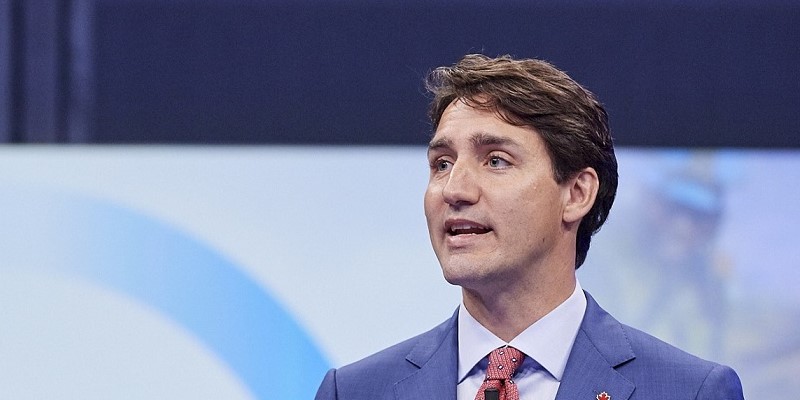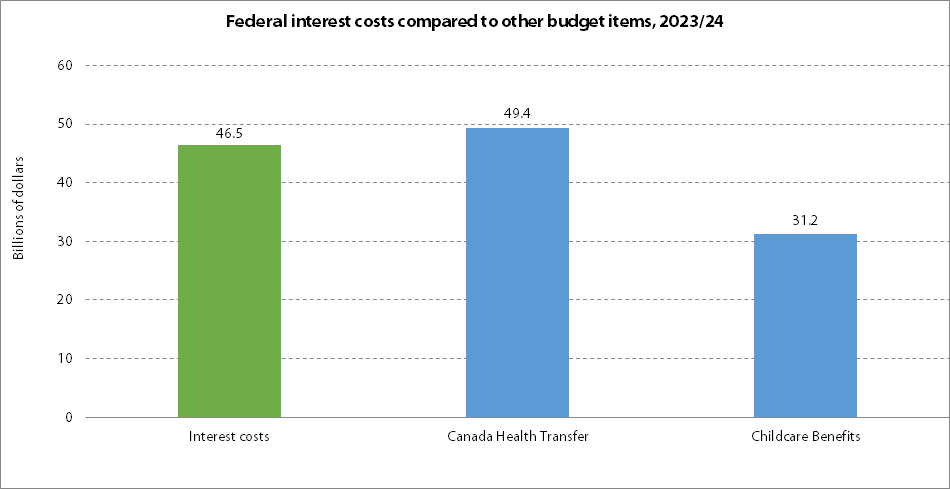Federal government expected to break ‘David Dodge Rule’ on debt interest

In early 2023, former Bank of Canada governor David Dodge warned that the federal government’s finances are on shaky ground and suggested the government should ensure debt interest costs stay below 10 per cent of total revenues to keep its finances sustainable. Despite this warning, the Trudeau government is expected to breach this rule for 2023/24.
Just like when a family takes out a mortgage, the government must pay interest on the debt it incurs. Debt interest costs represent taxpayer dollars that don’t go towards government programs such as health care, education or national defence. The level of debt interest costs is an indicator of the sustainability of government debt because when interest costs rise the government has less money available to spend on other programs, which creates pressure to take on additional debt to keep those programs fully funded.
This can create a vicious cycle where rising debt interest costs lead to higher debt accumulation, which then further increases interest costs.
Ensuring interest costs remain below 10 per cent of revenues (which has been coined the “David Dodge Rule”) is an important anchor to help keep government finances sustainable.
However, the Trudeau government is expected to break this rule in 2023/24. According to government projections from the most recent fiscal update, federal debt interest costs in 2023/24 will reach $46.5 billion or 10.2 per cent of projected revenues. In other words, more than 10 cents of every dollar the federal government receives in revenue will go towards debt interest.
To illustrate the burden that debt interest costs place on government finances, we compared federal interest costs with other important budget items. For example, in 2023/24 federal debt interest costs will be roughly $15.3 billion higher than the government expects to spend on total child-care benefits, one of the Trudeau government’s most-prized policies. Furthermore, federal debt interest costs will nearly equal the total amount the federal government will provide to provinces for health care through the Canada Health Transfer in 2023/24. Debt interest costs have become one of the federal government’s largest single expenses.

How have we reached this point?
Two factors drive debt interest costs—interest rates and the total level of accumulated debt. Given last year’s interest rate increases from the Bank of Canada, intended to tame inflation, it may be tempting to solely attribute the current burden of debt interest costs to rising rates. While they have certainly contributed to rising interest costs, substantial accumulation of debt has contributed as well.
Federal gross debt has nearly doubled since 2014/15—increasing by roughly $942 billion—largely because the Trudeau government lacks any sense of spending restraint and has chosen to run an uninterrupted series of deficits.
Through its reliance on debt-financed spending, the Trudeau government has massively increased government debt and helped grow debt interest costs.
By breaching the David Dodge Rule and allowing debt interest costs to rise to more than 10 per cent of total revenues, the Trudeau government has further weakened the sustainability of Canada’s federal finances. To ensure that debt interest costs don’t continue to grow, the government would be wise to exercise spending restraint and avoid accumulating more debt in its upcoming budget.
Authors:
Subscribe to the Fraser Institute
Get the latest news from the Fraser Institute on the latest research studies, news and events.

